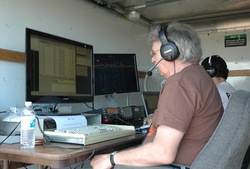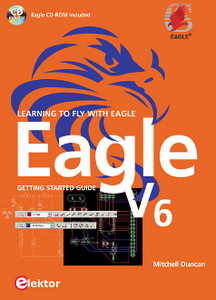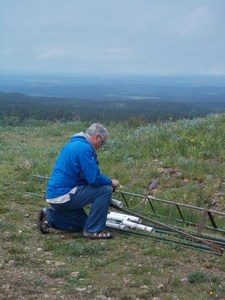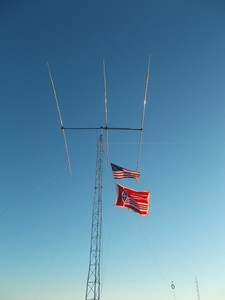 July 3, 2013 Editor: Ward Silver, NØAX | ||||||||
IN THIS ISSUE
NEW HF OPERATORS - THINGS TO DO There is a new way to enter the CQ World Wide Contest this fall if you BULLETINS The only bulletins in this issue are to wish my fellow Americans a happy Independence Day and our northern neighbors a happy Canada Day. BUSTED QSOS No particularly noteworthy errors in the last issue, either. CONTEST SUMMARY Complete information for all contests follows the Conversation section July 6-7
July 13-14
The IARU HF Championship (July 13-14) will be the home of WRTC2014 next year and this year will bring another "tune-up" operation during this year's contest as in 2012. The current plan is for 25 stations to be active, although plans are still firming up for some teams. If 30 stations are assembled, there will be around 200 people involved in the setup and operation. That makes you realize how big 2014 will be with 65 stations!! The WRTC2014 committee is offering awards for the stations that work the WRTC test stations on the most band-modes - such as an official WRTC shirt. (Thanks, Randy K5ZD, Co-Chairman, WRTC 2014)
A listing of IARU HF Championship HQ stations that have reported they will be QRV has been published by the Daily DX. The list will be updated as additions are received. If your country's HQ station is not listed, email the Daily DX editor, Bernie W3UR. Note that you still have to copy what the stations actually send...sometimes things change between the plan and the performance! The final rules for the CQ World Wide DX Contest 2013 are now available. CQ WW Director, Randy K5ZD (does he ever sleep?) expresses "Thanks to everyone who contributed to the process. The comments and feedback during the review process were extremely helpful." CQ WW RTTY Director, Ed WØYK notes, "The 2013 CQ WW RTTY rules are in this month's issue of CQ magazine. They are independent of the CQ WW CW/SSB contests and rules - they do not include the two new overlay categories (Rookie and Classic) but if these categories are successful in CQ WW CW and SSB, they will be added to RTTY in 2014. Besides Reverse VUCC (or VUCC/R as the Society also calls it), the Central States VHF Society also sponsors an award for annual VHF & Up activity in which everyone starts anew on July 1st (through June 30th of the following year). Rather than Grids, though, it is States and Provinces that count (even though only "States" are referenced in the name). (Thanks, John K9JK)
Sighted in the latest K9YA Telegraph, Dave NMØS has developed a new QRP rig based on his entry in the QRP ARCI's 2010 "72-part Challenge Design Contest". The Cyclone 40 is an enhanced version of the original design with 98 components and even better performance. The kit features all through-hole parts and easy assembly. The receiver is a superhet design with very good sensitivity and selectivity, tuning the entire 125 kHz CW segment of the 40-meter band. The U.S. Department of Commerce's National Institute of Standards and Technology (NIST) and National Telecommunications and Information Administration (NTIA) today announced plans to establish a national Center for Advanced Communications in Boulder, Colo. A key focus of the center will be to promote interdisciplinary research, development and testing in radio frequency technology and spectrum sharing for public safety and commercial broadband applications. Gary W9XT of Unified Microsystems has two new products: one is the ML-6, an LED replacement for the lamps in Hy-Gain rotor boxes that keep burning out. The other is a 16-line I/O expansion shield for Arduino fans. The Twin Cities DX Association (TCDXA) publishes an online newsletter, The Grayline, that is endorsed by member Scott KA9FOX. The last issue included stories like KØAD's story of choosing a new contest radio, KMØO's story of his involvement in the 9M4SLL DXpedition to the Spratly Islands, WØJX's story about various low band receiving antennas and a profile on WØRX.
Would you like to try a little RTTY contesting without committing to a whole weekend? Dean NW2K notes that the weekly 30-minute NCCC RTTY Sprint on Thursday evenings (in North America) is perfect for all RTTY contesters to try new hardware and software as well as to hone their skills. Specific information is posted weekly on the RTTY List. Sprint rules are located on the NCCC website. Why do engineers confuse Halloween and Christmas? Because OCT 31 = DEC 25. (Thanks, Rich N8UX) If you are a new ham or know one, perhaps you should point them at the Icom America Amateur Tool Kit, consisting of several downloadable maps and a ham jargon dictionary. Web Site of the Week - Are there any experienced Field Day participants who haven't considered using a kite-supported antenna? Richard G3CWI of SOTAbeams has the bug, too. "Flying antennas using kites is great fun. It's the kind of activity that all the family can enjoy. I have been doing it off and on for over 30 years. To get others started I have put together a page of tips and links for anyone that might be interested in having a go." WORD TO THE WISE Searching old issues of the Contest Update is easy if you use the site: function of Google's search engine. For example, to find more than a half-dozen tips and tricks for working with copperweld, enter "copperweld site:arrl.org/contest-update-issues" into the search window. Yes, this searches the older Contester's Rate Sheet issues, too! 29A...how do they do it? This photo album will give every Field Day participant pause - and some ideas! (Thanks, Alan N3ALN)
The International Space Station (ISS) ham radio shack has a new feature - SSTV! It's easy to receive the images - you don't even need to connect your rig to a PC and the software to view them is free. Read more about how it's done in this AMSAT-UK story. Remote controlled lightning protection? Well, maybe not for a direct strike but this video shows an interesting approach that could be useful for protection of remote stations against nearby strikes and surges. Either way, it's a neat job! (Thanks, Zoli HA1AG) Hovering is so 20th-century...but hovering upside down? While supercooled in liquid nitrogen? View the slot car set of the future! (Thanks, Bill WA6ITF) The Oceania DX (OCDX) contest committee announces that the results of the 2012 OCDX contest are now available. They were pleased to see a substantial increase in the number of phone logs from Australian and Indonesian stations. This additional activity from Oceania stations is encouraging for attracting more participation from stations outside Oceania. This year, a number of new records were set as well. The 2013 OCDX contest will be held on the first two full weekends of October - 5/6 October for Phone and 12/13 October for CW. (Thanks to the OCDX Committee - VK3MI/ZL1AZE, VK3TZ, ZL3GA, VK7GN, VK2HN, VK4TS, and VK6DXI) Results of the February 2013 CQ WPX RTTY Contest have been posted. (Thanks, Daily DX) Thanks to the efforts of John N2NC, the CQ WW online score database now goes back to 2003. (Thanks, Randy K5ZD, CQ WW Director) OPERATING TIP One of the new CQ WW rules for the Classic overlay category specifies that break periods be a minimum of 60 minutes. It is important to note that for most contests, "60 minutes" means 60 consecutive "empty" clock minutes during which no QSO was logged. (Seconds are usually not included in the Cabrillo log QSO: lines and so would not be considered in log checking.) This is a valid 60-minute off time in a log: This is NOT a valid 60-minute off time in a log: There must be 60 consecutive "empty" minutes. The "time B minus time A" gap of 1459 - 1359 = 60 does not meet the 60-minute test because only 59 consecutive minutes are actually "empty" - the last "empty" minute is 1458, not 1459. Leaving a gap of the minimum number of "empty" minutes is always the safest way to be sure of complying with the off-time minimum-break rules since the requirement is rarely stated exactly, nor are the consequences of a violation spelled out. This is also good practice for the 10-minute band change rule. Be safe and don't lose a multiplier or a big chunk of your log because you were one minute too quick to make a QSO! Long-time readers and station builders will recognize the name Polyphaser as a provider of both quality EMC products and technical literature. Polyphaser is today part of the Protection Group that offers other familiar brands. The technical literature is still there - just click the Knowledge Base tab and browse to what you need. All it takes is a minute's inattention when band-changing or a little irrational exuberance when calling a rare multiplier and a bandpass filter section is toast! Field repairs hinge on having exactly the right part on hand to repair the damaged filter - usually a precision capacitor. You can't just throw in any old 0.01 µF ceramic and expect it to work! Before the next contest, open up your filters and record the exact part values, then obtain a spare set of whatever you think you might need to effect repair. Bear in mind that matched components are often needed for symmetrical filter sections that act the same regardless of the direction of power flow. (Thanks, Steve N2IC) Here's a handy tip from Make Magazine reader Bradd Libby, "Wet your soldering sponge with tea. It's slightly acidic and will give the soldering iron a wonderfully clean tip." I wonder if Bradd hails from the U.K.? Online, there is a whole page of tips for your enjoyment, as well. Sibling website, Instructables, features this interesting cord attachment gadget, and a guide to repairing LCD monitors, too. While trying out my own advice for site-specific searching (see Word to the Wise above), I stumbled upon this gem at just the right time of year for antenna builders. Copperweld Rasslin' -- is there anything that strikes quicker terror into the hearts of hams? ("Just shinny up that mast," comes to mind, but I digress.) The ability of the stuff to stay coiled is legendary and has ambushed many a wire-hanger. Tom NU7J contributed the following idea for getting it straight right off the spool. "The trick is to build a straightening die. Drive eight 4-inch nails into a plank so that the nails hold the spool in place. Four nails guide the inside of the spool and four guide the outside. I used a 2x8 that's approximately five feet long and heavy enough to prevent the board from sliding when you pull the wire through the die. Drive three additional nails into the plank so that the wire coming off the spool is fed through the nails in an "S" pattern (opposing the natural curve of the wire -- Ed). The first nail should be four inches from the spool. The second nail is 1-7/8 inches from the first, and offset 3/8 inches. The third nail is 3-3/4 inches from and in line with the first nail. Hold one end of the wire firmly and steadily pull the wire from the spool through the nail pattern. It also helps to hold one foot on the end of the board, when pulling the wire. The resulting straight wire is a pleasure to work with." Mike VE3GFN went out with the Oakville, Ontario club, VE3HB, and learned a few new things, such as how to get antennas into trees. "One of their members has a huge model helicopter and flew our antenna lines up over 100-foot trees, so we had great elevation for our dipoles and such. Sure put my slingshot to shame!" See VA3MW's QRZ.com web page and you can see the helicopter in question, in the air, showing a trailing line, and the weight he uses, complete with red ribbon for visibility.
A friend of Mark PA5MW's recently built an NCDXF HF beacon monitoring receiver system. "During the first few weeks of operation we noted a large difference in s/n receiving performance between his site (antenna between low buildings in the open country) versus my location (a tiny back garden in a city)." You can see the day-to-day differences online, too. What's Joe K1JT been up to lately? A recent memo from Joe to users of his WSJT-X software in development brings us up to date. "For those with transceivers that can support it, the maximum displayed bandwidth has been increased from 1 kHz to 5 kHz. My TS-2000 is a good example of this capability: it works well at 4 kHz bandwidth. That's enough so that I can set the dial frequency to 14.076 and see essentially all the 20m activity on both JT65 and JT9. (Joe has also posted an example of the resulting waterfall display - Ed.) My plan is to allow the operator to choose JT9 or JT65 decoding, or both. If you choose both, all messages will appear on screen. The mode will be indicated with a single-character flag, or perhaps a distinct color, or some such scheme. If you double-click on a JT9 message, you'll transmit JT9. If it's a JT65 message, you'll transmit JT65." Joe observes also that, "JT9 has essentially the same (actually about 2 dB better) sensitivity, while requiring less than 10% of the bandwidth. That means ten times as many stations will fit into each kHz of spectrum!" Thanks, John W9SE Technical Web Site of the Week - We have all heard plenty about the makers and the DIY movement. How about the "fixers" and FIY (Fix It Yourself)? Hams are plenty flexible and resourceful, particularly as concerns repairs and "making do". This Wired article hits the nail on the head, so to speak, ending with the never-truer observation, "We started off upgrading a machine -- and wound up upgrading ourselves." (Thanks, Tom K1KI) We all have our favorite Field Day things but this video adapting the classic, "My Favorite Things", to our favorite not-really-a-contest ham event is a new favorite. A tip of Doctor Beldar's cap to lyric bender, Russell WP2AHG and vocalist Janet Clark. (Thanks, John K6MM and others) A Few of My Favorite Things About ARRL Field Day 2013 Dipole antennas strung all through the trees
Gensets are holding and tube sets are glowing Pileups on stations in far-off locations When the rain comes Ice-cold libations are Red Bull or soda
J-poles with twin-lead and good propagation Emergency power and portable towers When the storms come 3 July through 17 July An expanded, downloadable version of QST's Contest Corral in PDF format is available. Check the sponsor's Web site for information on operating time restrictions and other instructions. HF CONTESTS MI QRP July 4th Sprint--CW, from Jul 4, 2300Z to Jul 5, 0300Z. Bands (MHz): 1.8-28, 50. Exchange: RST, S/P/C, and QRPMI number or power. Logs due: 30 days. Rules 070 Club Firecracker PSK31 Sprint--Digital, from Jul 6, 8 PM to Jul 7, 2 AM. Bands (MHz): 7. Exchange: RST and S/P/C. Logs due: Jul 20. Rules Venezuelan Indep Day Contest--Phone,CW,Digital, from Jul 6, 0000Z to Jul 7, 2400Z. Bands (MHz): 1.8-28. Exchange: RS(T) and serial. Logs due: Jul 31. Rules DL DX RTTY Contest--Digital, from Jul 6, 1100Z to Jul 7, 1059Z. Bands (MHz): 3.5-28. Exchange: RST and serial. Logs due: Aug 9. Rules DARC 10-Meter Digital Corona--Digital, from Jul 7, 1100Z to Jul 7, 1700Z. Bands (MHz): 28. Exchange: RST, serial. Logs due: 14 days. Rules QRP ARCI Summer Homebrew--CW, from Jul 7, 2000Z to Jul 7, 2359Z. Bands (MHz): 1.8-28. Exchange: RST, S/P/C, QRP number or power. Logs due: 14 days. Rules ARS Spartan Sprint--CW, from Jul 9, 0200Z to Jul 9, 0400Z. Bands (MHz): 3.5-28. Monthly on the first Monday evening. Exchange: RST, S/P/C, and power. Logs due: 2 days. Rules OK1WC Memorial Contest--Phone,CW, from Jul 9, 1600Z - See website. Multiple time periods. Bands (MHz): 3.5, 50, 144, First through fourth Monday of each month; see website for bands. Exchange: RS(T) and serial. Logs due: 7 days. Rules CWops Monthly Mini-CWT Test--CW, from Jul 10, 1300Z - See website. Multiple time periods. Bands (MHz): 1.8-28. Twice monthly on 2nd and 4th Wed, 18 to 28 kHz above band edge. Exchange: Name and member number or S/P/C. Logs due: 2 days. Rules NS Weekly Sprint--CW, from Jul 12, 0230Z to Jul 12, 0300Z. Bands (MHz): 1.8-14. Exchange: Serial, name, and S/P/C. Logs due: 2 days. Rules FISTS Summer Sprint--CW, from Jul 12, 2000 EDT to Jul 12, 2400 EDT. Bands (MHz): 3.5-28. Exchange: RST, S/P/C, name, FISTS number or pwr. Logs due: 30 days. Rules IARU HF World Championship--Phone,CW, from Jul 13, 1200Z to Jul 14, 1200Z. Bands (MHz): 1.8-28. Exchange: RST and IARU zone. Logs due: 30 days. Rules Straight Key Weekend Sprintathon--CW, from Jul 13, 1200Z to Jul 14, 2359Z. Bands (MHz): 1.8-28, 50. Exchange: RST, QTH, name, member nr if member. Logs due: 5 days. Rules CQC Great Colorado Gold Rush--CW, from Jul 14, 2000Z to Jul 14, 2159Z. Bands (MHz): 14. Exchange: RST, serial, category, CQC member nr. Logs due: 30 days. Rules VHF+ CONTESTS VHF+ Alaska QSO Party--Phone,CW,Digital, from Jul 13, 1800Z to Jul 14, 2359Z. Bands (MHz): 50+. Exchange: Call sign and 4-char grid square. Logs due: 2 weeks. Rules MI QRP July 4th Sprint--CW, from Jul 4, 2300Z to Jul 5, 0300Z. Bands (MHz): 1.8-28, 50. Exchange: RST, S/P/C, and QRPMI number or power. Logs due: 30 days. Rules OK1WC Memorial Contest--Phone,CW, from Jul 9, 1600Z - See website. Multiple time periods. Bands (MHz): 3.5, 50, 144, First through fourth Monday of each month; see website for bands. Exchange: RS(T) and serial. Logs due: 7 days. Rules Straight Key Weekend Sprintathon--CW, from Jul 13, 1200Z to Jul 14, 2359Z. Bands (MHz): 1.8-28, 50. Exchange: RST, QTH, name, member nr if member. Logs due: 5 days. Rules LOG DUE DATES 3 July through 17 July
ARRL Information Click here to advertise in this newsletter, space subject to availability. Your One-Stop Resource for Amateur Radio News and Information ARRL membership includes QST, Amateur Radio's most popular and informative journal, delivered to your mailbox each month. Subscribe to NCJ - the National Contest Journal. Published bimonthly, features articles by top contesters, letters, hints, statistics, scores, NA Sprint and QSO Parties. Subscribe to QEX - A Forum for Communications Experimenters. Published bimonthly, features technical articles, construction projects, columns and other items of interest to radio amateurs and communications professionals. Free of charge to ARRL members: Subscribe to The ARRL Letter (weekly digest of news and information), the ARES E-Letter (monthly public service and emergency communications news), Division and Section news -- and much more! ARRL offers a wide array of products to enhance your enjoyment of Amateur Radio. Visit the site often for new publications, specials and sales. Donate to the fund of your choice -- support programs not funded by member dues! Reprint permission can be obtained by sending email to permission@arrl.org with a description of the material and the reprint publication. ACKNOWLEDGEMENTS ARRL Contest Update wishes to acknowledge information from WA7BNM's Contest Calendar and SM3CER's Contest Calendar. | ||||||||
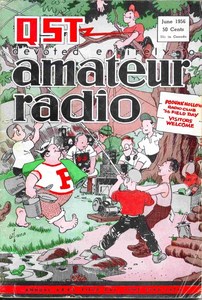

%20at%20Field%20Day%20-%20by%20K6MM.jpeg)
